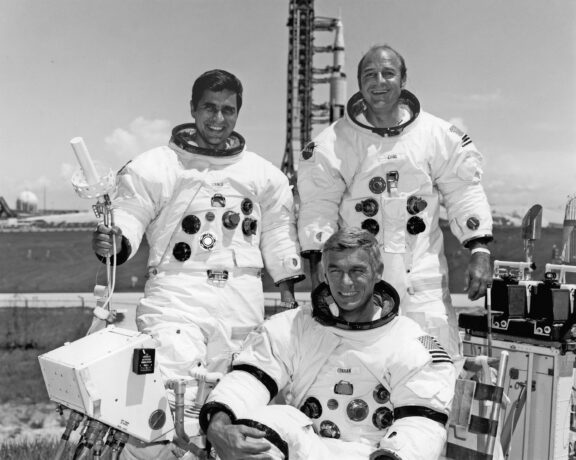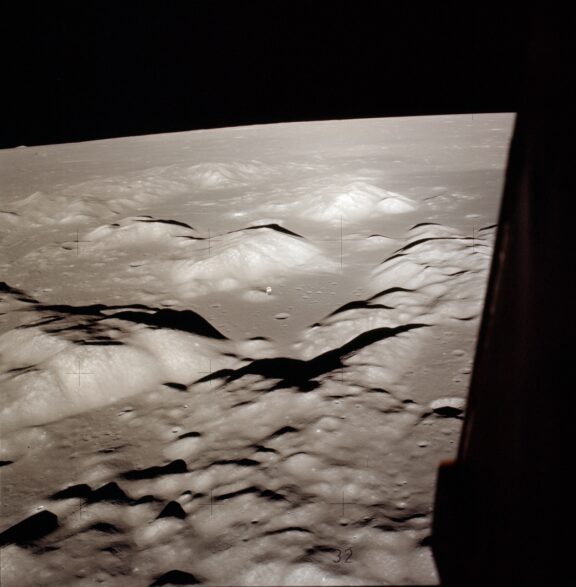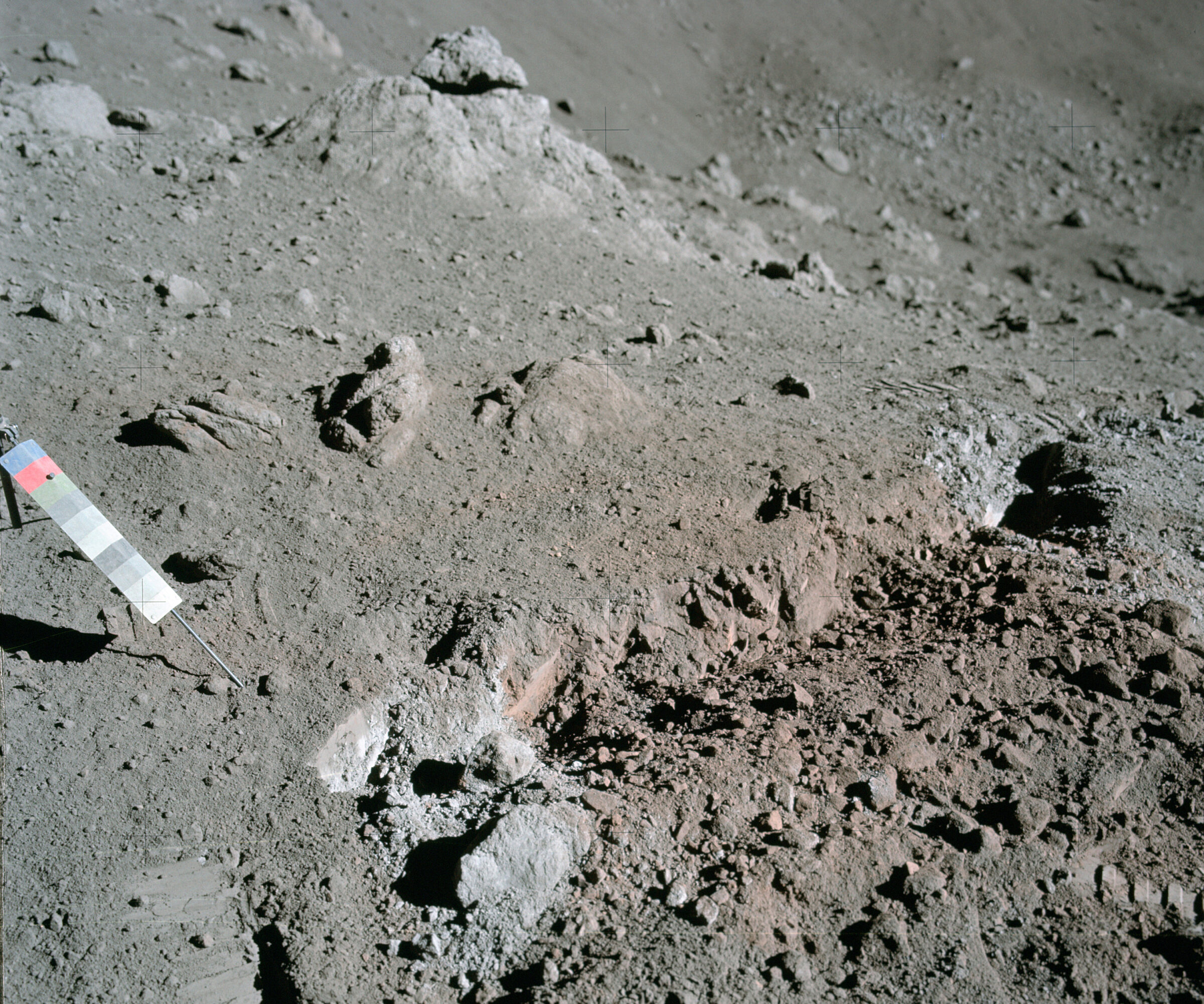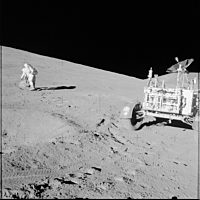All good things must come to an end. NASA’s ambitious Apollo program, which had kicked off just 11 years earlier, came to a close in December 1972 with Apollo 17. The mission was humanity’s sixth and final crewed Moon landing. By the time it launched, the Apollo program’s fate had already been sealed, as NASA turned its human spaceflight efforts to the Space Shuttle program. No humans have set foot upon the Moon since Apollo 17 commander Gene Cernan boarded the Lunar Module to come home on Dec. 14, 1972.
Apollo 17 featured extensive science objectives and the iconic Lunar Roving Vehicle. Cernan explored the surface with Harrison Schmitt, who piloted the Lunar Module. A Ph.D.-wielding geologist, Schmitt was the first and only professional scientist to walk on the Moon. Although previous Apollo moonwalkers were trained as capable field geologists, Schmitt’s presence gave the crew extra flexibility in identifying which targets to study and sample. The crew was rounded out by Command Module Pilot Ron Evans, who remained in lunar orbit.

The Saturn V rocket carrying Cernan, Schmitt, and Evans blasted off at 12:33 a.m. ET on Dec. 7, 1972. It was the only Saturn V mission to launch at night. Liftoff was slightly delayed due to a problem with a countdown sequencer.
The launch and journey to lunar orbit were uneventful. On Dec. 11, Cernan and Schmitt boarded the Lunar Module and flew it down into the Taurus Mountains near Littrow Crater, a region pushed up by the impact that formed the massive Sea of Serenity. The landing site was named Taurus-Littrow.

Taurus-Littrow was selected due to its geological diversity. The mountains offered access to Moon rocks that predated the Sea of Serenity impact. In particular, boulders accessible from the landing site appeared to have rolled into the valley from higher elevations. One sample returned to Earth, known as Troctolite 76535, is at least 4.2 billion years old. The rock provides evidence that suggests the Moon once had a magnetic field generated by a swirling liquid core like Earth.
Taurus-Littrow also offered access to young Moon materials. After the Sea of Serenity impact, subsurface lava erupted at the basin’s weak, fractured boundaries. During a stop at Shorty Crater, Schmitt found the mission’s famous orange soil, later determined to be a byproduct of regional volcanic eruptions. The soil formed 3.6 billion years ago.

Using the Lunar Roving Vehicle to scoot around the surface, Cernan and Schmitt performed three moonwalks totaling just over 22 hours. At one point they traveled 7.4 kilometers (4.6 miles) away from the safety of the Lunar Module, the farthest during the Apollo program.
The astronauts also broke the record for the most time spent on the surface: 75 hours. During the third and final moonwalk, Cernan unveiled a plaque on the base of the Lunar Module commemorating humanity’s “first explorations of the Moon.”
Cernan and Schmitt blasted off and rendezvoused with Evans in the Command Module. After jettisoning the Lunar Module, the trio headed for Earth. On the way home, Evans performed a spacewalk in the void between the Moon and the Earth to retrieve film cassettes. The mission ended with a splashdown in the Pacific Ocean on Dec. 19, 1972.
Project Apollo
Starting with Apollo 7 in 1968 and culminating with Apollo 17 in 1972, NASA launched 33 astronauts on 11 Apollo missions. Twelve humans walked on the Moon.
How much did the Apollo program cost?
A rich data set tracking the costs of Project Apollo, free for public use. Includes unprecedented program-by-program cost breakdowns, facilities construction, salaries, and related programs.


 Explore Worlds
Explore Worlds Find Life
Find Life Defend Earth
Defend Earth



